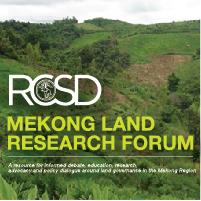Resource information
The transition to a market economy has sparked Vietnam's unprecedented urbanization and industrialization. In order to accommodate the spiraling land demand triggered by urban and economic growth, the Vietnamese government has been using the mechanism of compulsory acquisition at an astounding scale to convert massive amount of agricultural land to urban land for non-agricultural uses. A large number of the country's poorest, most vulnerable citizens have been forced out of their land to make way for development projects, yet, they are also the group that have least benefited from them. Compulsory acquisition has therefore been the fundamental cause of social conflicts. The growing public resistance against compulsory acquisition makes consolidating land the most difficult step in the housing development process, and one that is frequently beset with disputes and negotiation impasse, causing significant project delays. This thesis examines the dynamics behind the site clearance process for the 62-hectare Van Quan new urban area project, a state-led urban housing development project conducted by a state-owned developer, the Housing and Urban Development Corporation (HUD). Given the sizable scale of the project, it is expected that site clearance would be particularly long and arduous. Yet, HUD was able to complete land acquisition within 6 months. The thesis aims to understand why the Van Quan project had such a rapid site clearance process despite its scale and complexity. The findings reveal that structural conditions of the project and developer's own innovativeness were key factors shaping the auspicious land acquisition outcome. Moreover, contrary to the popular belief that state developers tend to resort to coercive measures in handling site clearance, HUD was actually rather accommodating towards farmers' demand. The thesis concludes by discussing two hypotheses that may explain this seemingly benevolent behavior of HUD as well as policy implications for implementing site clearance for other projects.


